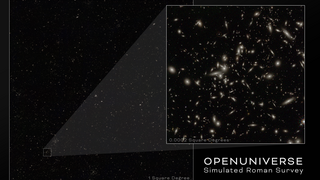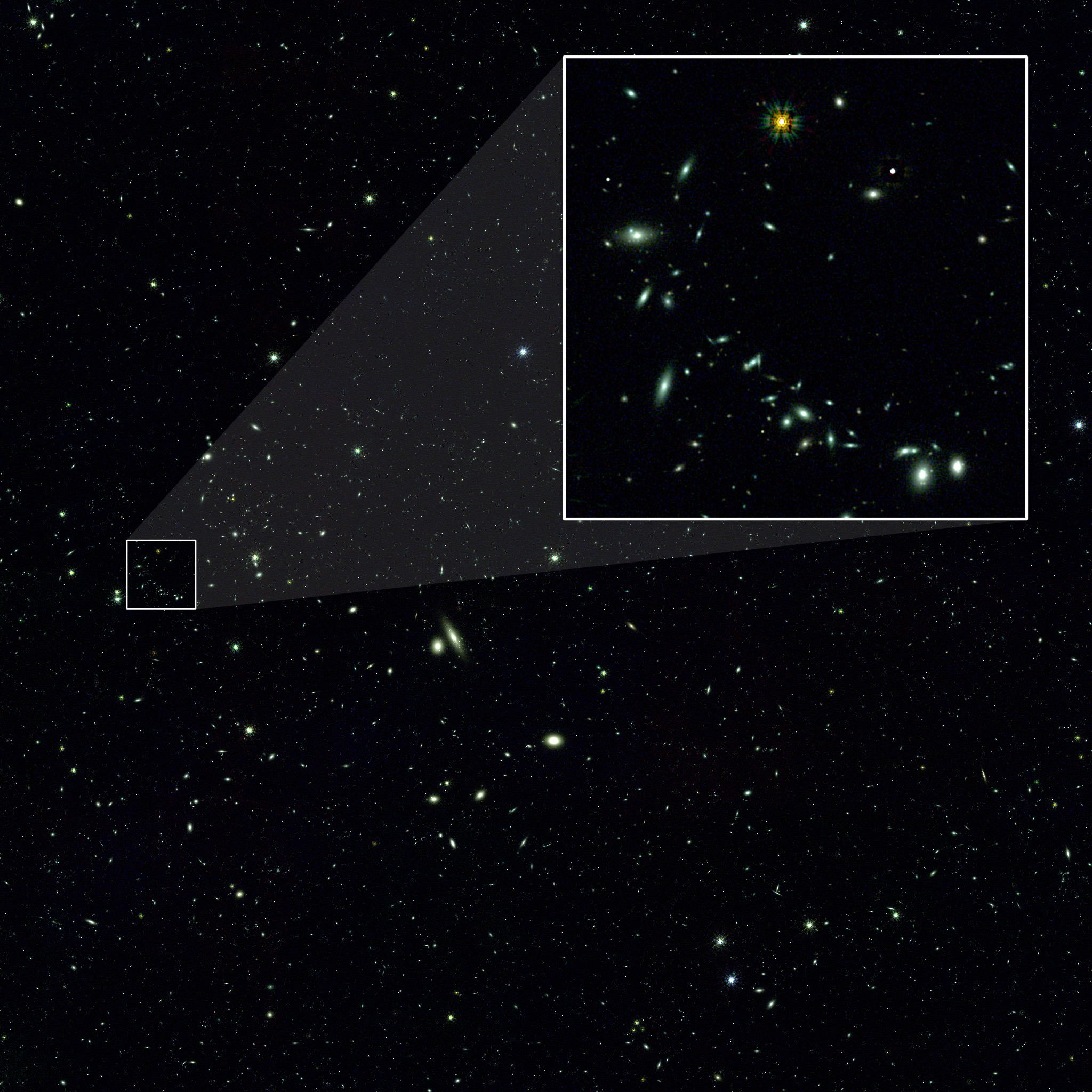Millions of Galaxies Emerge in New Simulated Images From NASA's Roman
This video begins by showing the most distant galaxies in the simulated deep field image in red. As it zooms out, layers of nearer (yellow and white) galaxies are added to the frame. By studying different cosmic epochs, Roman will be able to trace the universe's expansion history, study how galaxies developed over time, and much more.
Credit: Caltech-IPAC/R. Hurt and M. Troxel
Scientists have created a gargantuan synthetic survey that shows what we can expect from the Nancy Grace Roman Space Telescope’s future observations. Though it represents just a small chunk of the real future survey, this simulated version contains a staggering number of galaxies – 33 million of them, along with 200,000 foreground stars in our home galaxy.
The simulation will help scientists plan the best observing strategies, test different ways to mine the mission’s vast quantities of data, and explore what we can learn from tandem observations with other telescopes.
The team drew data from a mock universe originally developed to support science planning with the Vera C. Rubin Observatory, which is located in Chile and set to begin full operations in 2024. Because the Roman and Rubin simulations use the same source, astronomers can compare them and see what they can expect to learn from pairing the telescopes’ observations once they’re both actively scanning the universe.

This graphic compares the relative sizes of the synthetic image (inset, outlined in orange), the whole area astronomers simulated (the square in the upper-middle outlined in green), and the size of the complete future survey astronomers will conduct (the large square in the lower-left outlined in blue). The background, from the Digitized Sky Survey, illustrates how much sky area each region covers. The synthetic image covers about as much sky as a full moon, and the future Roman survey will cover much more area than the Big Dipper. While it would take Hubble or Webb around a thousand years to image an area as large as the future survey, Roman will do it in just over seven months.
Credit: NASA’s Goddard Space Flight Center and M. Troxel

This simulated Roman deep field image, containing hundreds of thousands of galaxies, represents just 1.3 percent of the synthetic survey, which is itself just one percent of Roman's planned survey. The galaxies are color coded – redder ones are farther away and whiter ones are nearer. The simulation showcases Roman’s power to conduct large, deep surveys and study the universe statistically in ways that aren’t possible with current telescopes.
Credit: M. Troxel and Caltech-IPAC/R. Hurt
This animation shows the type of science that astronomers will be able to do with future Roman deep field observations. The gravity of intervening galaxy clusters and dark matter can lens the light from farther objects, warping their appearance as shown in the animation. By studying the distorted light, astronomers can study elusive dark matter, which can only measured indirectly through its gravitational effects on visible matter. As a bonus, this lensing also makes it easier to see the most distant galaxies whose light they magnify.
Credit: Caltech-IPAC/R. Hurt

Same as above. Square GIF version.
Credit: Caltech-IPAC/R. Hurt
For More Information
Credits
Please give credit for this item to:
NASA's Goddard Space Flight Center. However, individual items should be credited as indicated above.
-
Science writer
- Ashley Balzer (ADNET Systems, Inc.)
-
Visualizer
- Robert Hurt (Caltech-IPAC)
-
Producer
- Scott Wiessinger (KBR Wyle Services, LLC)
-
Graphics
- Scott Wiessinger (KBR Wyle Services, LLC)
Release date
This page was originally published on Wednesday, March 8, 2023.
This page was last updated on Wednesday, May 3, 2023 at 11:43 AM EDT.

